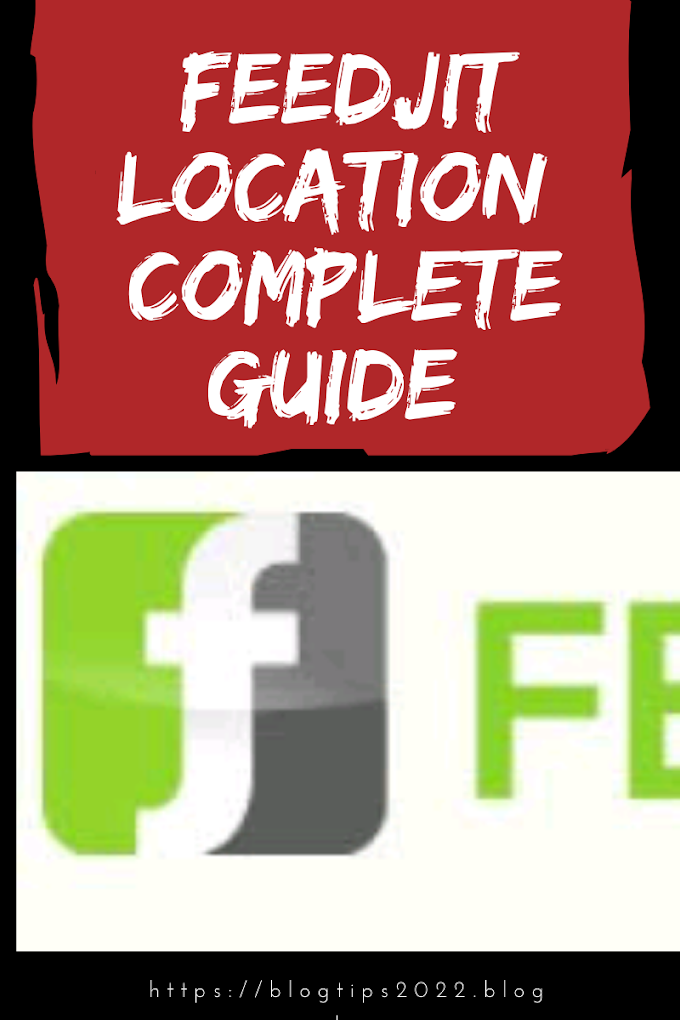how to create backlinks (step by step) for blog
how to create backlinks (step by step)
In the past, building backlinks to a site/blog was of utmost importance to a webmaster. Because, it was one such aspect that could literally transform the position of a blog in SERPS (Search Engine Results Page)! Even at present, backlinks are very important! SE (Search Engine)’s algorithms might have changed, changing the interpretation of backlinks. But still, they hold much significance. Here, we’ll discuss details like- its old interpretation by Search Engines, present interpretation, trickeries associated with creating them, solid link building tips etc.
chains representing backlinks
Backlinks, despite Search Engine algorithm updates, are still significant!
First of all, let us start off with the basics. Let’s understand the topic inside out!
What is a backlink?
In simple words, a backlink is an incoming link to your site/blog from other sources. It means that the source is linking to your blog or a specific blog page. The ‘source’ I talked about could be- another site/blog, directories, forums etc.
Dofollow links are what we should target. A nofollow and dofollow link may look the same for a visitor. He/she, upon clicking any of the two types of links, will be taken to your blog. But for search engine bots (crawling programs), nofollow links are like closed doors. Upon finding one nofollow link pointing your blog, they won’t crawl it. They’d only crawl dofollow ones!
That’s why, throughout the article, we’ll be dealing with dofollow incoming links only! Nofollow links will definitely get traffic, but the SEO advantages are compromised in the process!
Advantages of building incoming links
If loads of bloggers are concerned about this aspect, it must have some real value associated with it! The SEO benefits of backlinks are many! I’ll run through the advantages one by one.
Who is the Godfather of all Search Engines? Well, the answer is Google! So, let’s just limit our discussion to Big G! Do you know that Google takes into consideration some 200 factors while gathering results for a query and forming a SERP? If no, then you better digest this fact along with the food you are munching right now!
Backlink is one influencing factor among those 200 factors! Thus, this is the first advantage of having inbound links to your blog!
Then comes the ‘authority’ factor. The more incoming links your blog has, the authority of it increases! Yes, it worked plainly like this in the past. After some algorithm updates, the scenario has changed for sure. But still, backlinks and authority factor are linked!
Third comes the ‘crawl’ and ‘bot’ factor. You see, Google is an efficient SE thanks to these well programmed and relentless bots. Bots are programs that traverse through the world of sites and blogs, crawling them. It is this process that helps it index truckloads of sites and scout for the best results to display in SERPs. Now, if your blog has a dofollow inbound link from another site, the bots will follow that link while crawling the said site. As a result, they’ll crawl through your blog too! This passes on the SEO juice to your blog! It’d be better if the bots stumble upon your blog via a link from high PR (PageRank) site.
And what if I say PR of a site can be influenced by backlinks? You read it right folks! A bunch of dofollow backlinks from some high PR sites can change the fortunes of your blog! Yes, PR can be influenced through backlinks.
These are some of the advantages of backlinks! I hope that now you are genuinely interested in the topic, having read the mouthwatering advantages.
 |
| how to create backlinks (step by step) |
Reasons why building quality backlink is tricky now
In the past, the significance of backlinks were much more. It could either make or break a blog, such were its powers! As a result, webmasters took notice of it, and soon, found ways to exploit it! Man, we are experts at exploiting and misusing things!
In a bid to exploit inbound links, many ‘black-hat’ methods came into existence. Spam-linking, paid backlinks, comment spamming were some of them.
But, webmasters forgot that the folks at Google were smarter than they thought! Google soon updated the way it interpreted backlinks. Okay, it was not a complete overhaul, but still, a significant update was made.
The sites, which resorted to black-hat techniques were dealt with strictly. Many of them were penalized and were virtually invisible in SERPs after the updates!
You see where this story is heading, don’t you? The new interpretation of backlinks ensures that building incoming links is not a cakewalk. Search Engines can sniff out unnatural link building strategies easily!
My advice is that don’t go for shortcuts like paid backlinks. You never know what kind of links they manage to create within few hours of time!
So, what exactly is the present significance of backlinks?
Ask a blogger who started blogging in 2005-2009 about the past glory of backlinks. Back then, it almost alone was a major, influencing factor. It had a lot to do with domain authority.
The present scenario has changed. And they’ll admit that the powers backlinks once had has reduced much. Search Engines have started taking other factors seriously too. Basically, as I said before, there are more than 200 factors! Naturally, the significance of incoming links, over the period, has reduced.
But still, we can’t write this aspect off! It still is present among those 200 factors! It still has a link with domain authority, although it may not exert the same influence as it used to, in the past. It still helps a blog via the ‘crawl effect’ I described above. Also, it has got what it takes to influence goddamn PR! So folks, this sums up the present scenario of this aspect.
Tips to build quality backlinks
I’ll run through some awesome tips here.
#1 Write Useful Posts worth linking to
This is the best, natural remedy! You know why some successful blogs have truckloads of inbound links to them, despite their webmasters taking no effort to build backlinks? It is because their content is so damn useful that others mention it in their posts as a reference article!
This method is what Google loves! And this is the most effective way to get this job done! But, for this to happen, your articles must be insanely useful, unique and worth linking to! A well researched, well written, useful article will get the job done.
Sometimes, it may happen that a bad site/blog links back to your useful blog post. This may negatively affect your blog’s SEO. But hey, don’t worry! You may use Google’s Disavow tool from Webmaster Tools to show that your blog has nothing to do with that bad site, which is linking in!
#2 Guest Blogging
This method is the second best. Guest blogging on reputed blogs will not only earn you quality backlinks, it’ll also improve author’s exposure, reputation etc.
Try to guest blog on high PR blogs, related to your niche. This is very important! Ultimately, whether your guest blogging venture will turn into a success or not depends on the quality of the post you submit!
#3 Social Networking and Bookmarking sites
Yes, many of the social networking and bookmarking sites provide dofollow backlinks. Have you been ignoring those sites? If yes, you better start sharing your blog posts there.
Make it a point to share your blog posts on sites like Google +, Reddit, Stumble upon etc. They are high PR sites and the backlinks obtained this way are much valuable!
#4 Blog Directories
Okay, I’ve had mixed reviews about this method. Some bloggers claim that backlinks from blog directories have lost that sheen. But some claim that the links are valuable.
My take on the topic is to make use of top directories. Technorati is a good place to get started.
#5 Commenting on other blogs
This is a strategy that many bloggers use. Even I use it! But, please make sure that you don’t abuse this strategy!
Make sure that you comment on relevant blogs only. Follow some etiquette while commenting, like- reading the whole article before commenting, leaving genuine comments, making sure that you are having a gravatar enabled etc.
Also, try not to overdo commenting. If you do, it may get treated as spam! A good way to start is by analyzing your competitor’s backlinks using link checking tools and commenting on them.
You may use tools like backlinkwatch to analyze your competitor’s backlinks and find dofollow link allowing blogs to comment on. But hey, as I said before, leave meaningful comments only!
One should look at commenting not only as a method to build incoming links. It should also be used as a means to ‘network’ with fellow bloggers and build relationships!
#6 Link baiting
Link baiting works like this- first of all, create some useful piece of embeddable content like infographics, videos etc. Make the content available for other to share on their sites/blogs. Put forward a condition to get a backlink to your blog upon a blogger using the content on his/her blog.
This way, whenever your embeddable content is used on another blog, you get an incoming link from it! This ultimately depends on the quality of the content you create.
Also, you can’t control who links back to your blog, upon using this method. Thus, again, the Disavow tool might come handy!
#7 Making use of forums, article submission sites, answering sites etc
Many forums gives its members freedom to leave a link to their site in the ‘signature’ section. So, it makes sense to make use of this opportunity by joining quality forums related to your niche.
Don’t bombard the forum with links to your blog. Follow the guidelines of the forum, be an active member.
Article submission sites like about.com, hubpages, ezinearticles allows users to leave a link back to their site/blog. Usually, it is through a link in author info section.
These sites are high PR ones. Getting an incoming link won’t hurt you at all!
Next come answering sites. The best examples are Yahoo Answers and Quora. Both are sites where you may pose questions on myriads of topics. And, members, if possible, will answer those questions.
You may get backlinks to your blog from such sites by answering relevant questions and cite your blog posts as the ‘source’. But ensure that you don’t overdo this. Because, if you do, the moderators of the said sites will brand it as spamming!
If used wisely, the above sources can contribute some high PR incoming links! The key is to win the trust of others by becoming good/active members. Otherwise, just self promotion will lead to being branded as spammers (in the case of forums and answering sites)!
#8Making use of expired domains, which already have number of backlinks
Well, this strategy can work wonders if used correctly. But, to get the said results, one must work strategically. I’ll describe how to make use of expired domains. Follow the directions carefully.
First of all, you have to hunt for domains related to your niche, which have expired or are about to expire. You may use tools like moonsy.com or dropday.com to get this task done.
Once you find an appropriate domain, buy i… stop… don’t buy it before doing a thorough research about that domain.
The first step of the research is to analyze the existing backlinks of that domain. To analyze them, you may use the tool at backlinkwatch. Using this tool, check whether the links are spam or legit ones.
If majority of them are spam, leave that domain. Because it’ll take too much time to clean up the mess. But, if you observe that majority of the links are legit, go for it!
Now, after purchasing the domain, the next task is to clean up the remaining spam links. Now, you have few options to exploit this legit backlink rich blog!
You may develop it as an independent asset or use it as a ‘satellite blog’. Developing it as an independent entity has its own advantages. Because, already, the domain has got good number of legit incoming links!
You may also use it as a ‘satellite blog’ and use it to give backlinks to another old blog of yours! This will make sure that the SEO juice of the domain you just purchased is passed on to your existing blogs!
But, this whole ‘satellite’ affair can get penalized if you overdo linking. Don’t go for excessive, suspicious link building!
Conclusion
Times have changed, so has the interpretation of backlinks by search engines. Using the wrong strategies to build backlinks will only do more harm than good! I hope that the tips I shared will help you build quality incoming links to your blog. My take is that one shouldn’t hurry with this process. Going ‘slow and steady’ will help a lot!














